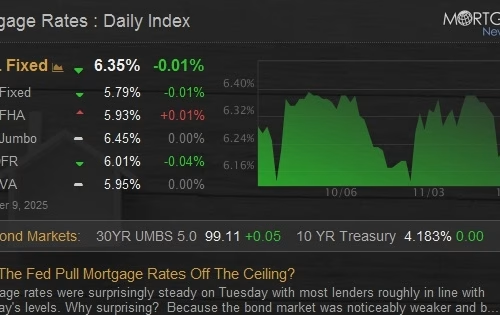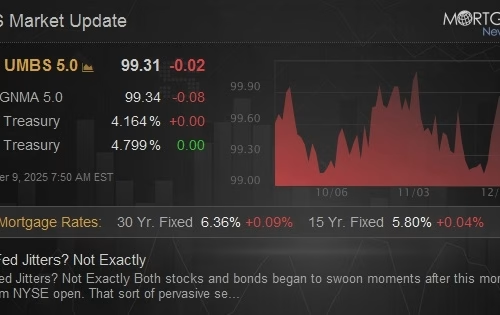Can I Refinance If I Owe More Than My Home’s Worth?
Summary:
Refinancing when you owe more than your home’s value (known as being “underwater” or having negative equity) presents unique challenges but remains possible through specialized programs. For homeowners and investors, strategic refinancing can lower monthly payments, prevent foreclosure, or shift to more stable loan terms. With changing interest rates and post-pandemic housing market fluctuations, understanding these options is particularly urgent today. This guide explores government-backed solutions, lender-specific programs, and alternative strategies to help borrowers navigate negative equity situations while avoiding common refinancing pitfalls.
What This Means for You:
- Potential Payment Relief: Even with negative equity, you may qualify for interest rate reductions that lower monthly payments
- Government Program Access: Explore FHA Streamline Refinance or VA IRRRL options with relaxed equity requirements
- Strategic Debt Management: Consolidate high-interest debts into mortgage through cash-out refinancing where permissible
- Warning: Extended loan terms or fees could increase long-term costs – carefully calculate break-even points
Explained: Can I Refinance If I Owe More Than My Home’s Worth?
Negative equity occurs when a property’s market value falls below the outstanding mortgage balance, creating a challenging refinancing scenario. Conventional refinancing typically requires at least 5-20% equity, but specialized programs exist for underwater homeowners. The key lies in understanding loan-to-value (LTV) ratios – calculated by dividing your loan balance by the home’s appraised value. When LTV exceeds 100%, borrowers enter “negative equity” territory.
In today’s market, strategic refinancing options serve two primary purposes: providing payment relief through lower interest rates (even with negative equity), and preventing foreclosure through loan modifications. While the original Home Affordable Refinance Program (HARP) expired, its successors and lender-specific programs continue offering solutions for underwater borrowers, particularly those with conventional loans backed by Fannie Mae or Freddie Mac.
“Can I Refinance If I Owe More Than My Home’s Worth?” Types:
Government-backed programs provide the most accessible underwater refinancing options. FHA’s Streamline Refinance doesn’t require appraisal or equity verification, making it ideal for underwater borrowers, though it mandates existing FHA loans. VA’s Interest Rate Reduction Refinance Loan (IRRRL) similarly offers simplified refinancing for qualifying veterans without equity requirements. Conventional loan holders might qualify for Fannie Mae’s High LTV Refinance Option (up to 97% LTV) or Freddie Mac’s Enhanced Relief Refinance (up to 125% LTV).
Proprietary bank programs increasingly fill gaps left by expired federal initiatives. Portfolio lenders often consider “ability to pay” over strict equity requirements, particularly for creditworthy borrowers. Interest-only refinancing or temporary payment reductions may provide interim relief, though they extend loan timelines. Conversely, hard money loans appear tempting but carry dangerous interest rates (10-15%) and short terms that often worsen financial positions.
Requirements of “Can I Refinance If I Owe More Than My Home’s Worth?”:
Eligibility hinges on five key factors: (1) Loan Type (must qualify for specific program requirements); (2) On-time Payment History (typically 6-12 months of consecutive payments); (3) Maximum LTV Ratios (program-specific, reaching up to 125% for select options); (4) Credit Score Minimums (often 620+ but varies by program); (5) Debt-to-Income Ratios (generally below 50%). Investors face stricter requirements, often needing 15-25% equity even for specialized programs.
“Can I Refinance If I Owe More Than My Home’s Worth?” Process:
Underwater refinancing follows a specialized 7-step process:
1. Program Identification: Determine eligibility for HARP successors or lender-specific options
2. Documentation Gathering: Prepare payment histories, tax returns, and debt statements
3. Automated Valuation: Many programs use AVMs instead of traditional appraisals
4. Loan Application: Submit through preferred lender with program specification
5. Risk Assessment: Lenders analyze creditworthiness despite negative equity
6. Terms Finalization: Select rate/term adjustments or potential principal forbearance
7. Closing: Sign updated loan documents, often with minimal closing costs
The entire process typically takes 30-45 days—faster than traditional refinancing due to reduced appraisal requirements—with average closing costs between $2,000-$5,000 depending on loan size and program fees.
Choosing the Right Finance Option:
Evaluate options using three critical metrics: (1) Rate Reduction Impact (calculate new payment vs. current); (2) Break-Even Timeline (cost of refinancing ÷ monthly savings); (3) Long-Term Cost Analysis (total interest paid over loan life). Watch for predatory lenders pushing unnecessary products like single-premium mortgage insurance. Investors should prioritize portfolio lenders familiar with rental property cash flow analysis rather than residential programs.
Current market conditions favor early 2024 refinancing applications, as many economists predict rising interest rates. Homeowners considering property improvements should explore FHA 203(k) loans which combine renovation costs with mortgage refinancing, potentially increasing property value to alleviate negative equity.
People Also Ask:
What alternatives exist if I can’t refinance underwater?
Consider loan modifications, short refinancing (partial debt forgiveness), or deed-in-lieu agreements. The FHA-HAMP program offers payment reduction alternatives without refinancing eligibility requirements.
How does underwater refinancing affect my credit?
Lender credit inquiries cause minor temporary score reductions (3-5 points), but consistent refinanced loan payments create positive credit history. Avoid cash-out refinancing if your DTI will exceed 45%, as it risks credit damage.
Can investment properties qualify for underwater refinancing?
Options narrow significantly—portfolio lenders and certain commercial programs allow up to 90% LTV. Most require 12-24 months of positive rental income documentation and 700+ credit scores.
Will refinancing reset my loan term?
Generally yes unless you specifically opt for term maintenance. A 20-year mortgage can unintentionally extend to 30 years if not carefully structured during refinancing.
What happens if my home value decreases further?
You may qualify for successive refinancing under continuous program eligibility, but principal forbearance options become limited. Maintain detailed records of home improvements to support future valuations.
Extra Information:
• FHA Resource Center: Details streamlined refinance processes for FHA borrowers
• Making Home Affordable Program: Alternative options for struggling homeowners
• CFPB Mortgage Help: Regulatory oversight and complaint processes related to refinancing
Expert Opinion:
Addressing negative equity through refinancing requires urgent action to prevent escalating financial exposure. Borrowers should consult HUD-approved housing counselors before committing to any refinancing program, as improper mortgage restructuring can compound financial instability. Proactive equity rebuilding through strategic payments remains critical alongside refinancing decisions.
Key Terms:
- Underwater mortgage refinance programs
- Negative equity loan modification options
- FHA streamline refinance requirements
- High LTV refinancing solutions
- Mortgage principal forbearance strategies
- Refinancing with credit challenges
- Investment property refinance solutions
*featured image sourced by Pixabay.com
Automatic Mortgage Calculator
Welcome to our Automatic Mortgage Calculator 4idiotz! Please just add your figures in the correct sections below and the Automatic Mortgage Calculator will automatically calculate the results for you and display them at the bottom of the page.





